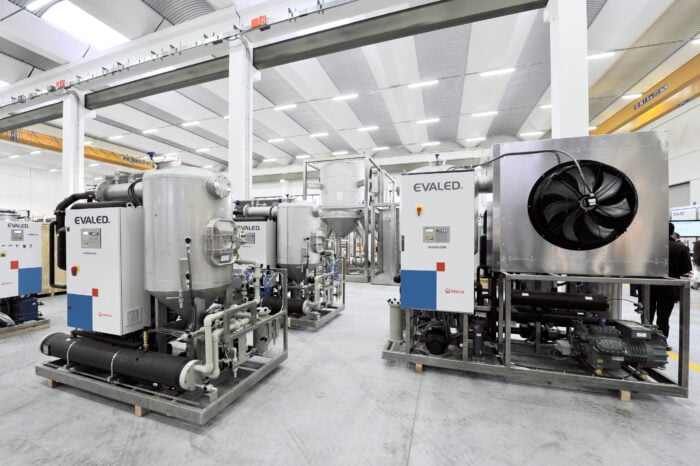
Treating industrial multi-stream wastewater is a complex and expensive endeavor for many commercial operations. The high flow rates associated with multi-stream wastewater have traditionally required costly, sprawling treatment systems that occupied a lot of precious floorspace and consumed energy.
Fortunately, using vacuum evaporation and distillation technologies as part of a comprehensive treatment system addresses these issues. With that in mind, here are answers to three frequently asked questions regarding vacuum evaporation in multi-stream wastewater treatment.
Many industrial operations produce or treat multiple streams of wastewater that contain byproducts from different processes. Automotive assembly plants, metal finishing/plating operations, alkaline cleaner recovery applications, wastewater recyclers, and wastewater treatment companies are just a few examples.
When multiple waste streams are combined into a single stream, the resulting mixture contains numerous contaminants that need to be separated (or recovered) from the fluid. Common multi-stream mixtures include:
Traditional filtration-based treatment options usually require a lengthy step-by-step approach to treat each stream individually: remove particulates, remove oils and grease, and then treat the water. Vacuum evaporation approaches wastewater treatment differently. Rather than processing the wastewater to remove the contaminants from the liquid, vacuum evaporation removes the water from the contaminants. This approach provides several benefits:
Vacuum evaporators turn wastewater into high-quality distillate that can be recycled and reused to meet Zero Liquid Discharge goals or discharged to publicly owned treatment works. No other treatment method can achieve the high rate of water recovery and concentration that vacuum evaporation can attain while also realizing low energy consumption. Capable of producing concentrations of 85% or more for residual total solids, vacuum evaporation decreases disposal costs. Additionally, components such as metals, active ingredients, and proteins can be recovered.
Until recently, the upfront investment costs and energy requirements for vacuum evaporation processes were too costly for many operations. However, new technological advancements have made vacuum evaporation a much more economical treatment option.
Energy consumption is a major contributing factor. Atmospheric evaporators that include a kettle-type system require direct heat to boil the water. The heat is usually produced through combustion or steam, which is energy intensive. Vacuum evaporation, however, leverages low- or no-cost energy sources to evaporate the liquid and does so under a slight vacuum and at a lower temperature, thus requiring less energy.

Recovering waste heat to power the evaporation process is one way vacuum evaporators can lower energy costs. EVALED® Vacuum Evaporators, for example, use the vapor produced during processing as a heat source. As a result, energy isn’t wasted and a secondary energy source, such as natural gas, isn’t needed to boil the wastewater to evaporate it. This approach reduces energy consumption by as much as 25 times.
EVALED® Mechanical Vapor Recompression (MVR) Evaporators can treat high flow rates that are typical of multi-stream wastewater while still lowering energy consumption. They utilize an electric resistance heater to evaporate water, and then use the vapor generated in the boiling chamber to create a steady-state operation.
Operation and maintenance are other aspects to consider. EVALED® systems are highly automated, offering 24/7 operation that requires minimal operator intervention. Constructed with corrosion-resistant materials and featuring a modular design, EVALED® Vacuum Evaporators are engineered to reduce maintenance and offer low total cost of ownership. Because liquid flash-evaporates in the system’s boiling chamber rather than the heat exchanger, fouling in the heat exchanger is reduced. This minimizes downtime needed to clean the heat exchanger.
As with all wastewater treatment options, an analysis of the chemical and physical properties of the waste fluid will influence the specific treatment solution for your multi-stream wastewater. To learn more about vacuum evaporation and other wastewater treatment options, contact a PRAB industrial wastewater treatment expert today.